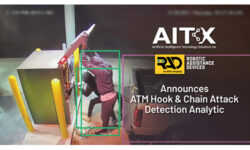Why the Alarm Industry Needs to Agree on a Common Communications Method
2G may have just seen its sunset, but between now and 2021 the industry will also have to replace every 3G/4G radio out there.

Can the industry create synergy in which an installer wouldn't have to worry about which platform he chose and where all control panels would work on all platforms?
Editor’s note: SSI is thrilled to welcome industry veteran Morgan Hertel as a new Monitoring Matters contributor and look forward to sharing his perspectives with our readership.
As the shutdown of the AT&T 2G network starts to become a reality, it’s still amazing to me the number of dealers and installers that either didn’t believe it would happen or said they didn’t know it was going to happen.
Folks, we had three years to get our act together. It begs the question, “How do we get there from here?”
The alarm industry is at a pivotal point in its history where communications options are not only limited, but they also for the most part have a very short shelf life.
Future Options Come With Flaws
POTS lines were the staple for about 30 years. They provided reliable and consistent services to users and they were universal in nature. Despite having no line security or supervision, they were solid. This era has now come to an end for many reasons.
The next easy solution was control channel signaling over AMPS radios. The AMPS network was eventually shut down in 2008 and everyone was forced to replace with new 2G radios, which were supposed to last the better part of 20 years; now eight years later the 2G network is toast.
With 2G radios gone, we are and have been for the most part installing 3G/4G radio solutions – not just a few of them, but millions across multiple carriers and dozens of platforms. The next ugly transition will be from 3G/4G to LTE.
Most pundits will tell you that the phase-out of 3G/4G to LTE at the carrier level will occur in the 2020-2021 timeframe – less than five years away!
Worse, at the time of this writing there is only one LTE radio available to the alarm industry. So, between now and 2021 the industry will have to replace every 3G/4G radio out there.
This seems almost like a logistical impossibility when you consider that the majority of these swapouts will require a technician and a truck roll; anyone want to do the math to see how much this will cost and how long it will take?
While LTE will be the next go-to platform, 5G is already being beta tested and it will be the next play for all these data-hungry users and devices. Keep in mind the M2M (machine to machine) market is large in numbers of devices, but the reality is that most handset accounts are generating $100 a month versus the average M2M account which is less than $3.
RESOURCE: Beat the Clock: Replacing All Those Outdated Radios
The handset market also has a complete device refresh every six years (anyone out there with a six-year-old phone?). So, like most things the technology change will follow the money. Besides cellular we really only have a couple of options.
We have mesh radio, like AES IntelliNet, which is a solid solution for those users that want to build a network. However, a disadvantage is that for the most part they do not support remote command and control, something that’s pretty important especially in the residential market.
We also have IP/WiFi/Ethernet, but most dealers will tell you that while it’s free and fast they don’t feel comfortable with it as a sole path. This is mainly because of the reliability problems considering that most Internet services go down when the power is out.
Why Not Consider a Common Path?
When I write articles or speak at industry events, I frequently get told to “tell them what they need to know, not what they want to hear.” So, now that you know the “gloom and doom,” I’d like to suggest a new paradigm for the alarm industry.
It’s one that’s bound to panic most manufacturers at first, but in the end I believe will serve the industry far better than what we have today. If you look at the history of the computer industry, you’ll notice that they eventually agreed on a standard communication platform.
Can you imagine how bad it would be if every vendor or operating system had a different way to communicate? For example, PCs wouldn’t be able to “talk” to Macs, and neither would be able to “talk” to Linux. It would be a real mess.
Today, you can get Internet connectivity from many sources. You can purchase network gear anywhere and interoperability for the most part is not a concern. Why isn’t the alarm industry in the same place?
We continue to have each manufacturer or brand live in its own silo. Not only will consumers have to pay for this, it hurts the alarm industry, shrinks profits and business valuations and really doesn’t serve anyone for the long term.
There Need to Be Other Options Available
It’s clear that there will be more to come in our industry. It’s time to either get ready for the next communication phase-out or start thinking about ways to make a change. Could we as an industry agree on a common communications bus like the computer industry did?
Can we create synergy in which an installer wouldn’t have to worry about which platform he chose and where all control panels would work on all platforms?
Imagine a communications module that was user replaceable by just mailing a plug-in card that your customer could connect on their own.
Imagine a cellular solution that could last 20 years or a mesh network that was impervious to problems and gave you command and control. Imagine if you actually had some choices.
READ NEXT: Why the Alarm Industry and Central Stations Need to Embrace Togetherness
If you enjoyed this article and want to receive more valuable industry content like this, click here to sign up for our FREE digital newsletters!

Security Is Our Business, Too
For professionals who recommend, buy and install all types of electronic security equipment, a free subscription to Commercial Integrator + Security Sales & Integration is like having a consultant on call. You’ll find an ideal balance of technology and business coverage, with installation tips and techniques for products and updates on how to add to your bottom line.
A FREE subscription to the top resource for security and integration industry will prove to be invaluable.








